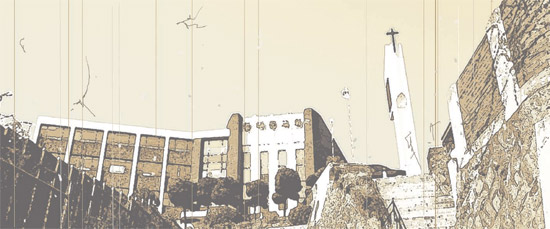When age alone is an indicator of value

I was also surprised to learn about these lost treasures. There were two obelisks on both sides of the temple entrance, but one of them had been taken and carried off to France in the 19th century. It has been in the Place de la Concorde in Paris since 1836. So a lone column stands without its other half at the temple gate. Knowing how it feels to have national treasure stolen, I sympathized with the Egyptians.
When I entered the temple, I was amazed once again. A colossal mosque towered above the ancient ruins. A local guide informed us that it was also a cultural site. The Abu Haggag Mosque was built from the 13th to the 19th century. It is dedicated to the Islamic saint Abu Haggag, who was originally from Baghdad and died in Luxor in 1243. Efforts were made in the 19th century to demolish the mosque, but the public opposed its demolition, prioritizing the religion of modern people over those of the dead.
Behind the mosque is a small chapel built by Alexander the Great, the Macedonian king who took Egypt from the Persian Empire in the fourth century. Christian murals by Romans can be found there. The Romans occupied Egypt in 30 BC and ruled the area for more than 600 years, propagating Christianity. All of these stories represent the Luxor Temple’s turbulent history as well as that of Egypt, the guide said.
The Hagia Sophia, in Istanbul, the pinnacle of Byzantine architecture, has a similar backstory. The Ottoman Turks occupied Istanbul in 1453 and turned the Christian church into a mosque. In the place, which serves as a museum, I could see old Christian paintings that had undergone restorations for decades. However, Islamic scripts still remain today. Officials are preserving all parts of history, including that under occupation.
The City of Seoul announced a plan to tear down the 120-year-old Dongdaemun Church, which stands at the site of the Fortress Wall, in order to have the wall registered as a World Heritage site. The church has a meaningful place in Korea’s modern history. It is certainly not some structure that can simply be demolished to make the Fortress Wall more original. The Korean National Training Center in Taeneung is also being considered for demolition, as it is located in the royal tomb complex from the Joseon Dynasty (1392-1910).
Does age alone mean that something has more value? Can history only be found in architectural structures and historical sites? How about the memories and pains associated with them?
*The author is an editorial writer of the JoongAng Ilbo.
by CHAE IN-TAEK










with the Korea JoongAng Daily
To write comments, please log in to one of the accounts.
Standards Board Policy (0/250자)